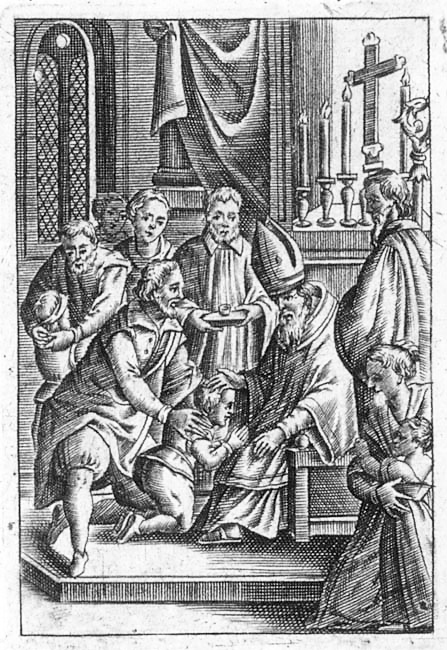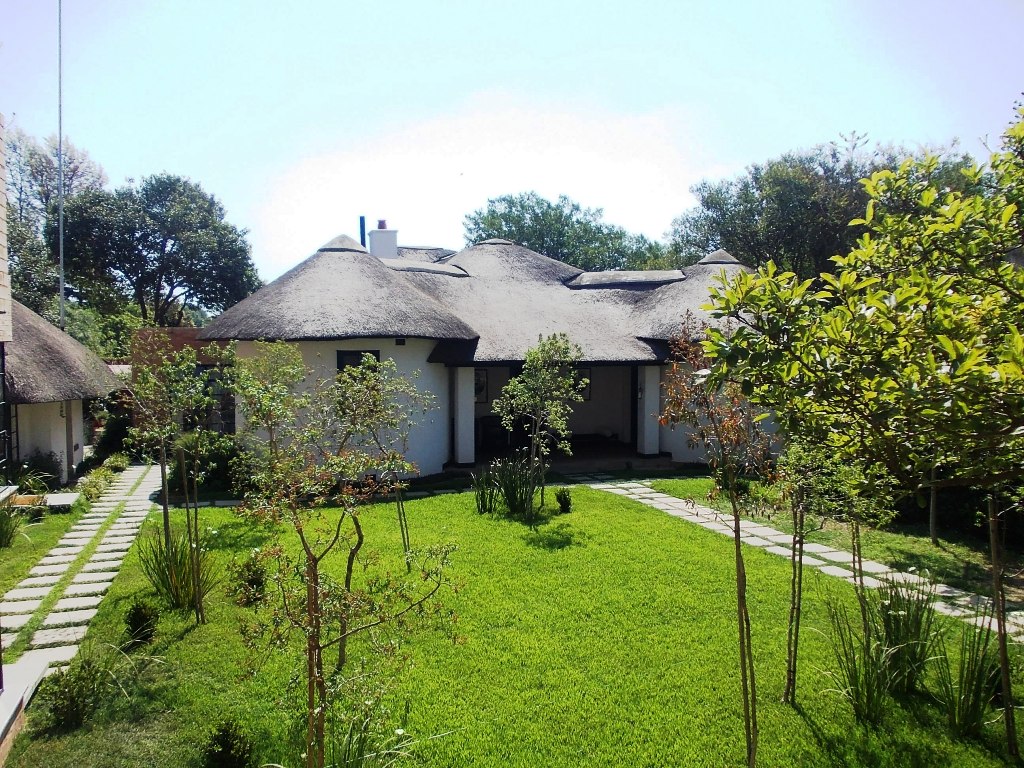|
Temple Israel (Johannesburg)
Temple Israel is the oldest of eleven Progressive synagogues in South Africa. It is a provincial heritage site, built in the Art Deco style by architect Hermann Kallenbach. It is located in the Johannesburg suburb of Hillbrow. It is an affiliate of the South African Union for Progressive Judaism (SAUPJ), which is part of the World Union for Progressive Judaism (WUPJ). Temple Israel officially opened on August 23, 1936, as the mother synagogue of Progressive Judaism in the country. Johannesburg mayor Maurice Freeman, a member of the Jewish community, laid the cornerstone on September 22, 1935. The founding rabbi was Moses Cyrus Weiler. Progressive Judaism The progressive streams of Judaism began during the Enlightenment in 18th-century Europe, and was brought to South Africa in the 1930s by Jews fleeing persecution in Central and Eastern Europe. Progressive Judaism aims to strike a balance between modernity and tradition. Progressive Judaism has given prominence to the mor ... [...More Info...] [...Related Items...] OR: [Wikipedia] [Google] [Baidu] |
Progressive Judaism
Reform Judaism, also known as Liberal Judaism or Progressive Judaism, is a major Jewish denomination that emphasizes the evolving nature of Judaism, the superiority of its ethical aspects to its ceremonial ones, and belief in a continuous search for truth and knowledge, which is closely intertwined with human reason and not limited to the theophany at Mount Sinai. A highly liberal strand of Judaism, it is characterized by lessened stress on ritual and personal observance, regarding ''halakha'' (Jewish law) as non-binding and the individual Jew as autonomous, and great openness to external influences and progressive values. The origins of Reform Judaism lie in 19th-century Germany, where Rabbi Abraham Geiger and his associates formulated its early principles. Since the 1970s, the movement has adopted a policy of inclusiveness and acceptance, inviting as many as possible to partake in its communities rather than adhering to strict theoretical clarity. It is strongly identified ... [...More Info...] [...Related Items...] OR: [Wikipedia] [Google] [Baidu] |
Beit Emanuel Progressive Synagogue
Beit Emanuel is a progressive synagogue located in Parktown, Johannesburg. The synagogue was established in 1954 and is one of the largest progressive Jewish congregations in South Africa.Beit Emanuel South African Union for Progressive Judaism. Accessed on 5 December 2019 i-born, Rabbi Sa'ar Shaked has been Beit Emanuel's congregational rabbi since 2013. It is an affiliate of the South African Union for Progressive Judaism (SAUPJ), which is part of the |
Confirmation
In Christian denominations that practice infant baptism, confirmation is seen as the sealing of the covenant created in baptism. Those being confirmed are known as confirmands. For adults, it is an affirmation of belief. It involves laying on of hands. Catholicism views confirmation as a sacrament. The sacrament is called chrismation in the Eastern Christianity. In the East it is conferred immediately after baptism. In Western Christianity, confirmation is ordinarily administered when a child reaches the age of reason or early adolescence. When an adult is baptized, the sacrament is conferred immediately after baptism in the same ceremony. Among those Christians who practice teen-aged confirmation, the practice may be perceived, secondarily, as a " coming of age" rite. In many Protestant denominations, such as the Anglican, Lutheran, Methodist and Reformed traditions, confirmation is a rite that often includes a profession of faith by an already baptized person. Confirmatio ... [...More Info...] [...Related Items...] OR: [Wikipedia] [Google] [Baidu] |
Liberal Judaism (United Kingdom)
Liberal Judaism (until 2002: Union of Liberal and Progressive Synagogues) is one of the two WUPJ-affiliated denominations in the United Kingdom. It is smaller and more radical in comparison with the other one, the Movement for Reform Judaism. It is considered ideologically closer to American Reform Judaism than it is to the British Reform movement. As of 2010 it was the fourth largest Jewish religious group in Britain, with 8.7% of synagogue-member households. Belief and practice The beliefs of Liberal Judaism are outlined in ''The Affirmations of Liberal Judaism'', authored in 1992 by Rabbi John D. Rayner, the most prominent of the movement's later theologians. Like Liberal Judaism founder Claude Montefiore, Rayner shared the ideals of worldwide Reform Judaism, also known as Progressive or Liberal Judaism. Rayner affirmed a personal God; an ongoing (or "progressive") revelation allowing all to form their own views of religiosity; mandating a critical understanding of sacred ... [...More Info...] [...Related Items...] OR: [Wikipedia] [Google] [Baidu] |
Union For Reform Judaism
The Union for Reform Judaism (URJ), known as the Union of American Hebrew Congregations (UAHC) until 2003, founded in 1873 by Rabbi Isaac Mayer Wise, is the congregational arm of Reform Judaism in North America. The other two arms established by Rabbi Wise are the Hebrew Union College-Jewish Institute of Religion and the Central Conference of American Rabbis. The current president of the URJ is Rabbi Rick Jacobs. The URJ has an estimated constituency of some 880,000 registered adults in 831 congregations. It claims to represent 2.2 million, as over a third of adult U.S. Jews, including many who are not synagogue members, state affinity with Reform, making it the largest Jewish denomination. The UAHC was a founding member of the World Union for Progressive Judaism, of which the URJ is the largest constituent by far. Belief and practice Reform Judaism, also known as Liberal or Progressive Judaism, embraces several basic tenets, including a belief in a theistic, personal Go ... [...More Info...] [...Related Items...] OR: [Wikipedia] [Google] [Baidu] |
Great Park Synagogue (Johannesburg)
The Great Park Synagogue is an Orthodox synagogue situated in Houghton, Johannesburg. The present building was consecrated in 2000, after the congregation vacated their long-time home, the Great Synagogue on Wolmarans Street, Hillbrow in 1994, after eighty years. The Wolmarans Street synagogue came to be known as the city's mother synagogue and "the crown jewel of Orthodox Judaism in South Africa." All large-scale Jewish events in Johannesburg were held in the building, and throughout its existence it was the seat of the country's chief rabbi. Northward migration by congregation members led to the synagogue closing its doors in 1994. The relocated synagogue was built on the model of the Great Synagogue, whose own architecture in turn was inspired by the Hagia Sophia. Great Park Synagogue was also the original name of the synagogue on Wolmarans Street before it became the Great Synagogue. History On July 10, 1887, a year after the city's founding, the Witwatersrand Goldfields Jew ... [...More Info...] [...Related Items...] OR: [Wikipedia] [Google] [Baidu] |
Herman Kallenbach
Hermann Kallenbach (1 March 1871 – 25 March 1945) was a Lithuanian-born Jewish South African architect who was one of the foremost friends and associates of Mahatma Gandhi. Kallenbach was introduced to the young Mohandas Gandhi while they were both working in South Africa and, after a series of discussions, they developed a long-lasting association. Early life Kallenbach was born in 1871 in Žemaičių Naumiestis, Lithuania (then part of the Russian Empire) as the third eldest out of seven children. His father, Kalman Leib Kallenbach, was a Hebrew teacher and, later, a timber merchant. Hermann's childhood centered on education, sports and friendships with the village youth. He would later study architecture in Stuttgart and Munich. In 1896, he went to South Africa to join his uncles in Johannesburg, where he practiced as an architect and became a South African citizen. A skilled ice-skater, swimmer, cyclist, and gymnast, and successful architect, Kallenbach acquired conside ... [...More Info...] [...Related Items...] OR: [Wikipedia] [Google] [Baidu] |
Parktown
Parktown is a wealthy suburb of Johannesburg, South Africa, the first suburb north of the inner city (both chronologically and geographically). It is affectionately known as one of the Parks, others including Parkview, Parkwood, Westcliff, Parktown North, Parkhurst and Forest Town. Parktown is one of Johannesburg's largest suburbs, neighbouring Hillbrow, Braamfontein and Milpark to the South; Berea and Houghton to the East; Killarney and Forest Town to the North, and Westcliff, Melville and Richmond to the West. Originally established by the Randlords in the 1890s, Parktown is now home to many businesses, hospitals, schools, churches and restaurants, whilst still maintaining quiet residential areas. It is also home to three of the five campuses of the University of the Witwatersrand including the education campus, medical school and Wits Business School. Parktown is now divided into Parktown and Parktown West with Jan Smuts Avenue forming the dividing line. It is located ... [...More Info...] [...Related Items...] OR: [Wikipedia] [Google] [Baidu] |
Hebrew Union College-Jewish Institute Of Religion
Hebrew (; ; ) is a Northwest Semitic language of the Afroasiatic language family. Historically, it is one of the spoken languages of the Israelites and their longest-surviving descendants, the Jews and Samaritans. It was largely preserved throughout history as the main liturgical language of Judaism (since the Second Temple period) and Samaritanism. Hebrew is the only Canaanite language still spoken today, and serves as the only truly successful example of a dead language that has been revived. It is also one of only two Northwest Semitic languages still in use, with the other being Aramaic. The earliest examples of written Paleo-Hebrew date back to the 10th century BCE. Nearly all of the Hebrew Bible is written in Biblical Hebrew, with much of its present form in the dialect that scholars believe flourished around the 6th century BCE, during the time of the Babylonian captivity. For this reason, Hebrew has been referred to by Jews as '' Lashon Hakodesh'' (, ) since an ... [...More Info...] [...Related Items...] OR: [Wikipedia] [Google] [Baidu] |
South African Union For Progressive Judaism
The South African Union for Progressive Judaism (SAUPJ) is an affiliate of the World Union for Progressive Judaism and supports 11 progressive congregations. The SAUJP estimates that it represents around 6,000 South African Jews and around 10 per cent of the overall Jewish population residing in South Africa.November 2019 SAUPJ. Accessed on 6 December 2019Johannesburg: Culture & Community Reform Judaism. Accessed on 6 December 2019 In 2020 a study by the Institute for Jewish Policy Research
[...More Info...] [...Related Items...] OR: [Wikipedia] [Google] [Baidu] |
Jewish Music
Jewish music is the music and melodies of the Jewish people. There exist both traditions of religious music, as sung at the synagogue and domestic prayers, and of secular music, such as klezmer. While some elements of Jewish music may originate in biblical times, differences of rhythm and sound can be found among later Jewish communities that have been musically influenced by location. In the nineteenth century, religious reform led to composition of ecclesiastic music in the styles of classical music. At the same period, academics began to treat the topic in the light of ethnomusicology. Edward Seroussi has written, "What is known as 'Jewish music' today is thus the result of complex historical processes". A number of modern Jewish composers have been aware of and influenced by the different traditions of Jewish music. Religious Jewish music Religious Jewish music in the biblical period The history of religious Jewish music spans the evolution of cantorial, synagogal, and ... [...More Info...] [...Related Items...] OR: [Wikipedia] [Google] [Baidu] |



